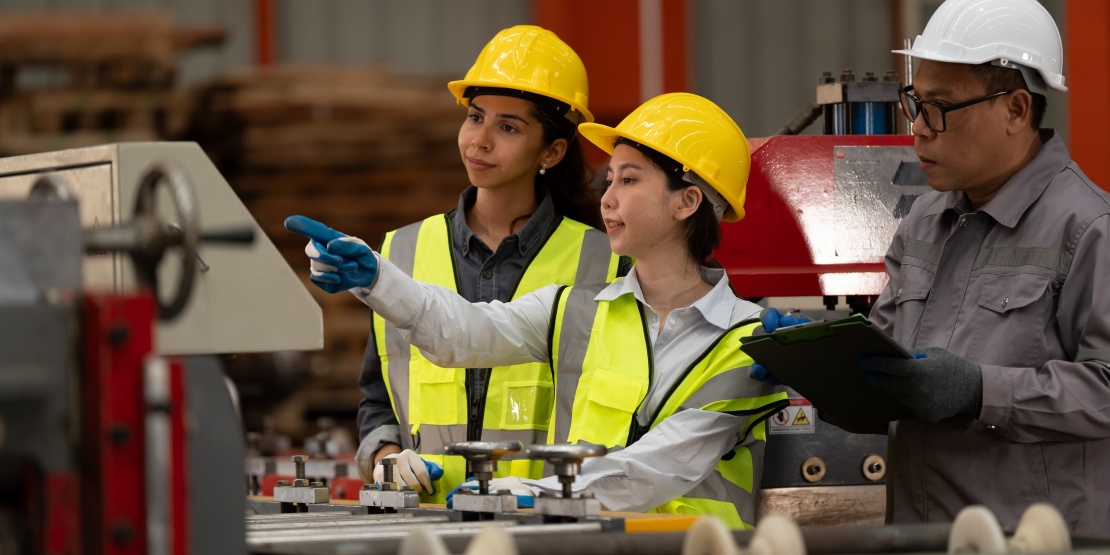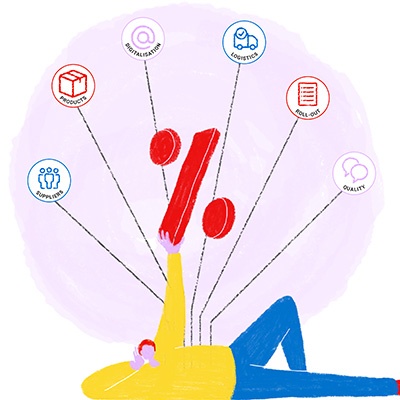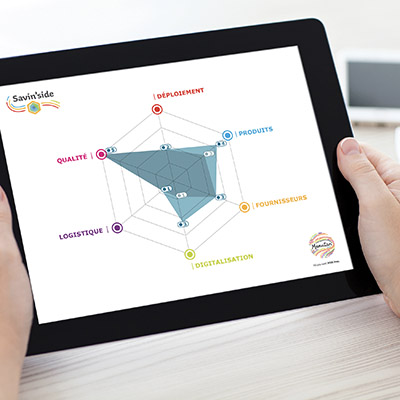To address the pressure on our planet and its resources, a growing number of companies are gradually initiating their circular transition. This initiative represents not only sustainability but also resilience and competitiveness. It's a complex process where the supply chain plays an essential role. Indeed, supply chain professionals are responsible for the procurement, transport, and transformation of 100 billion tonnes of materials entering the global economy each year.
Circular supply chain, a strategic issue
Until now, our global supply chains have been predominantly linear. We extract raw materials to produce goods, which are transported and distributed, and then discarded when they reach their end of life.
In recent years, this economic model has been challenged with many product and/or raw material shortages. This phenomenon began with the Covid-19 pandemic and was exacerbated by geopolitical tensions that further revealed resource access limitations.
Deborah Dull, founder of the Circular Supply Chain Network[1], adds: "No one understands better than supply chain professionals the ebb and flow of material availability and the resulting effects on costs and downstream impacts on shortage or excess. Even the best-prepared teams, with the strongest partnerships and advanced systems, can't do much in the face of disruptions from unforeseen events."
It is in this context that the circular economy appears as a sustainable solution to strengthen the resilience of our supply chains. This involves reconfiguring supply chains according to a more local approach, controlled access to materials and energy, as well as certain efficiency in resource use. This is how circular supply chains will be best positioned to withstand and bounce back from future challenges.
The advantages of a circular supply chain
For businesses, adopting a circular supply chain promises many benefits, serving the competitiveness and sustainability of their operations.
Reducing costs
First, the company makes "intelligent" savings. It optimises the use of its resources, reducing production costs. It therefore purchases fewer new materials, which may be subject to significant price fluctuations. Not to mention that it also reduces waste and associated treatment costs.
Improving risk management
Thanks to the circular supply chain, the company limits its exposure to resource shortage risks or price fluctuations. This also ensures the procurement of resources from reliable sources. The company thus gains resilience and strengthens the reliability of its operations.
Ensuring compliance
Regulations favouring the circular economy and sustainable development are increasing worldwide. All companies, without exception, will gradually have to comply. Those who are most advanced in this area will even be able to anticipate upcoming legislation, while strengthening their reputation.
Boosting sales
The circular economy promotes the emergence of new business models: rental, spare parts sales, maintenance services... Companies initiating their circular transition will reach new markets, attract new environmentally conscious customers, and build loyalty.
Reducing impact on the environment
The circular supply chain reduces the company's impact on the environment, whether it's raw material extraction, greenhouse gas emissions, waste production, pollution... This approach is part of a global sustainability logic, supporting the energy and environmental transition.
How to initiate the transition to a circular supply chain?
Moving from linear to circular is a major transformation. It involves profound changes in business models, product design, customer engagement... For supply chain teams, the Ellen MacArthur Foundation distinguishes five main areas of action in this regard.
Preparing your teams
First, organisational structures need to be developed and supply chain teams properly equipped. This involves rethinking and clarifying the roles and responsibilities of each person, within each team (procurement, sourcing, logistics...). New roles may even emerge within the company.
It's then necessary to develop knowledge and capabilities in a circular economy business. Teams can follow training programmes, participate in internal workshops, attend conferences, or conduct pilot projects. This helps better understand the issues, promotes cross-functional collaboration, and fosters everyone's commitment.
(Re)designing the network
Next, the challenge is to optimise current networks to integrate reverse logistics on a large scale, and in a profitable way. This is essential for implementing various circular initiatives: functional economy, product take-back, rental, etc.
To achieve this, it's necessary to optimise the geographical distribution of network elements: factories, distribution centres, collection or repair centres... More localised operations are an effective, profitable, and low-carbon solution for sourcing circular inputs. This also leads to new types of relationships with one's ecosystem. The prime example is industrial symbiosis at Kalundborg. Not to mention the need to decide on recovery systems: centralisation/decentralisation, internalisation/externalisation...
Engaging your suppliers
Supply chain professionals cannot succeed in their circular transition without their suppliers. They guarantee the quality, availability, and traceability of circular inputs. It is therefore crucial to encourage them to adopt circular economy practices.
This can take the form of new criteria related to the circular economy that are integrated into negotiations, contracts, and supplier evaluations. It may also be relevant to reward good performance and innovation. All these initiatives must be based on support and collaboration. To facilitate this transition to circular practices, it's necessary to raise awareness, educate, and strengthen partners' skills with a win-win approach.
Leveraging technologies
To support and facilitate circular flows of information, products, and materials, companies must rely on the right solutions. They need accurate information on volumes, primary and secondary materials, quality levels...
In this regard, emerging technologies (blockchain, artificial intelligence, Internet of Things...) can improve visibility of the circular supply chain. Tracking and labelling systems, such as the Digital Product Passport, also provide comprehensive and verifiable information on the origin, condition, and history of products and components. All these are ways to improve transparency, facilitate access to circular inputs, and strengthen trust in the circular supply chain.
Monitoring performance
Lastly, professionals must evaluate the success of their circular supply chain using new key performance indicators. Traditional KPIs (costs, quality, lead times, and greenhouse gas emissions) now incorporate circularity. Businesses can, for example, measure the proportion of circular inputs used, the proportion of waste reused, recovered, or recycled, the technical and/or functional lifespan of products, the weight of circular inputs used relative to turnover...
Following this, it is possible to set circular economy objectives and link these elements to annual evaluations and incentive systems for teams to truly engage them in this approach.
The final word goes to Adeline Bret, manager and sustainability and CSR consulting manager at Citwell: "The supply chain has an essential role in this transition towards circularity. As value chain actors and decision-makers, you will need to adapt or rethink your processes, organisations, and tools through even greater collaboration with your partners and industry. Our professions must therefore evolve and will become even more exciting."
[1] Deborah, DULL (Founder, Circular Supply Chain Network), Building circular supply chain, 15 November 2023, Ellen Macarthur Foundation, [https://www.ellenmacarthurfoundation.org/circular-supply-chains]









